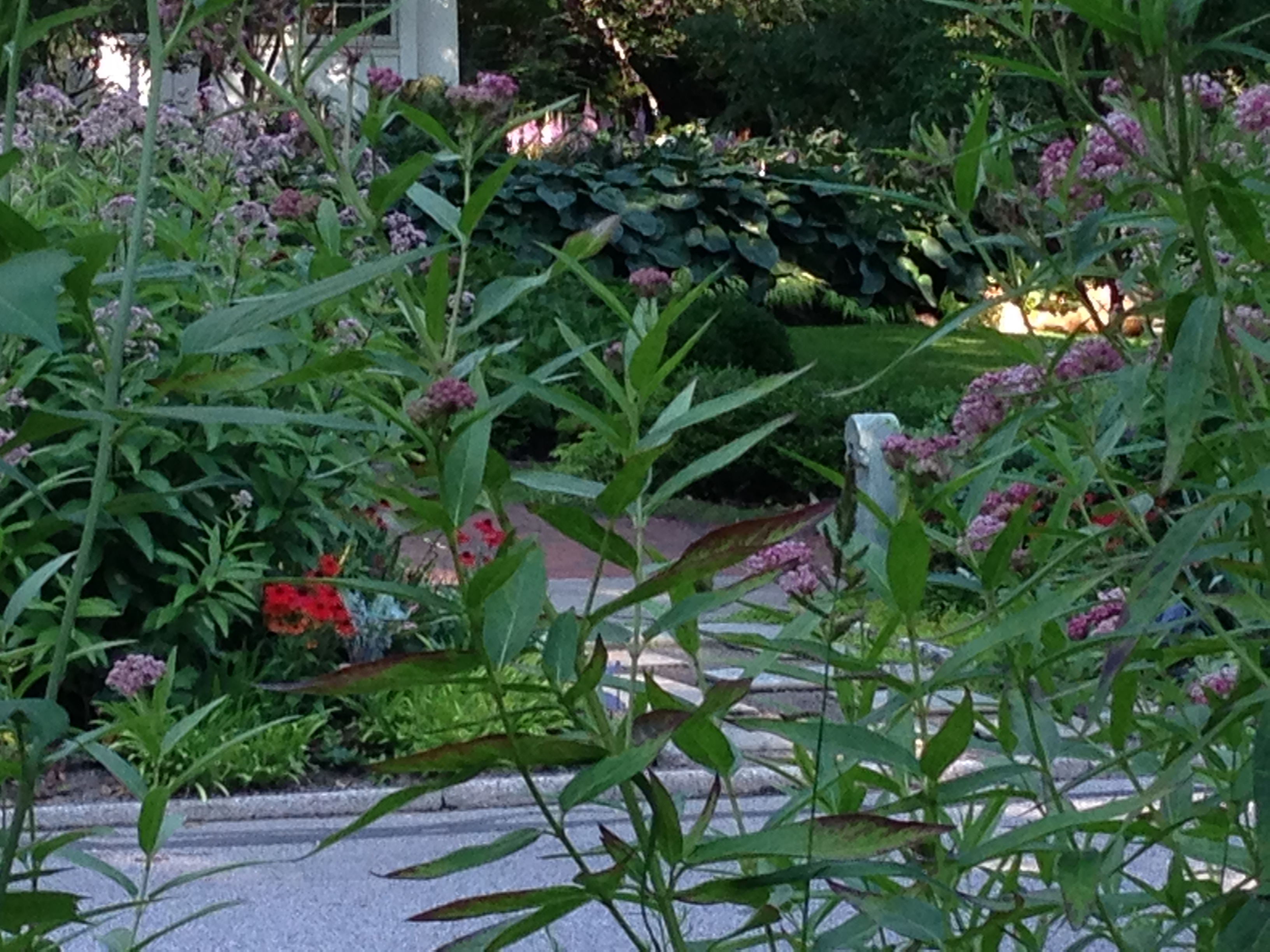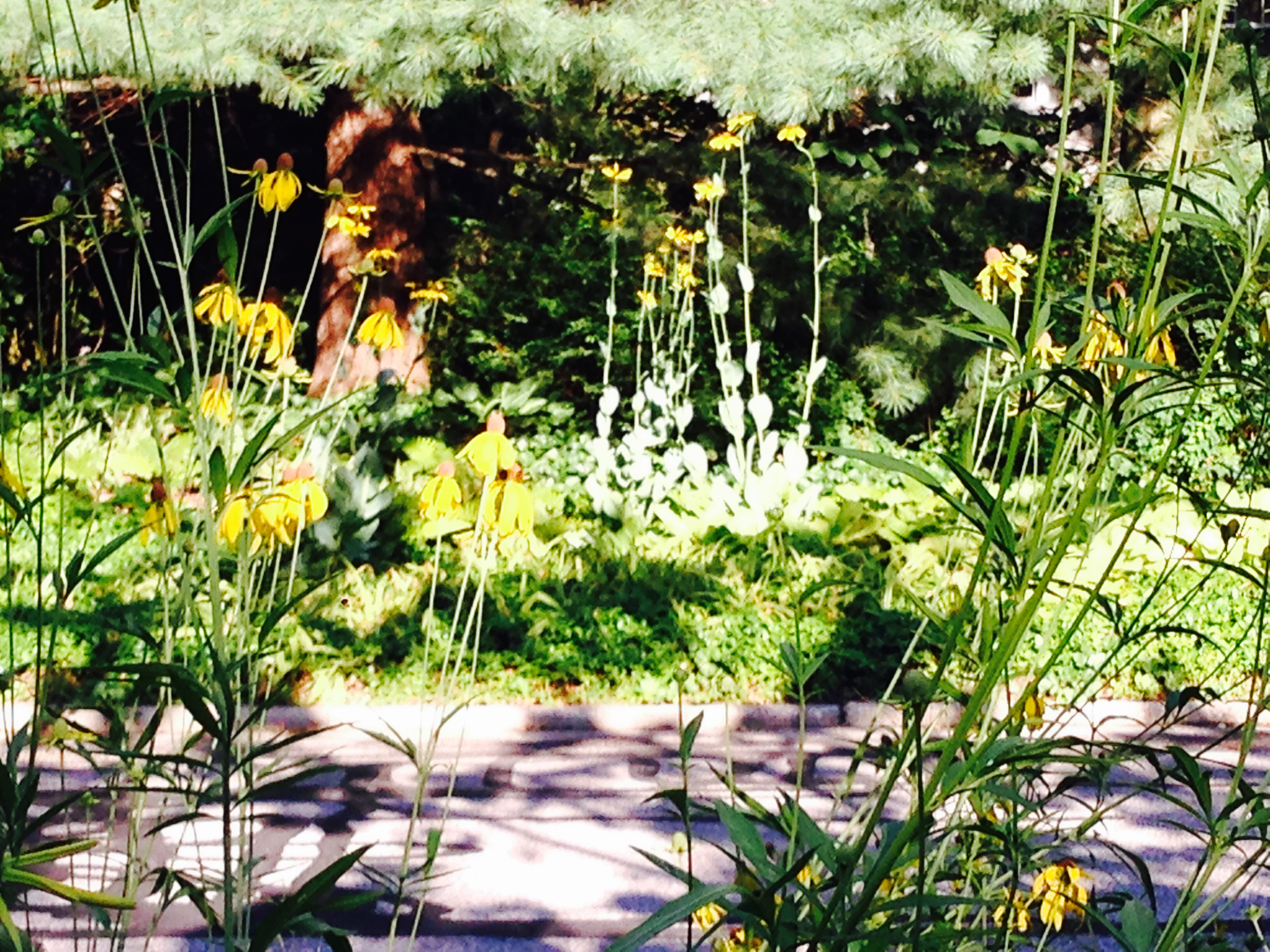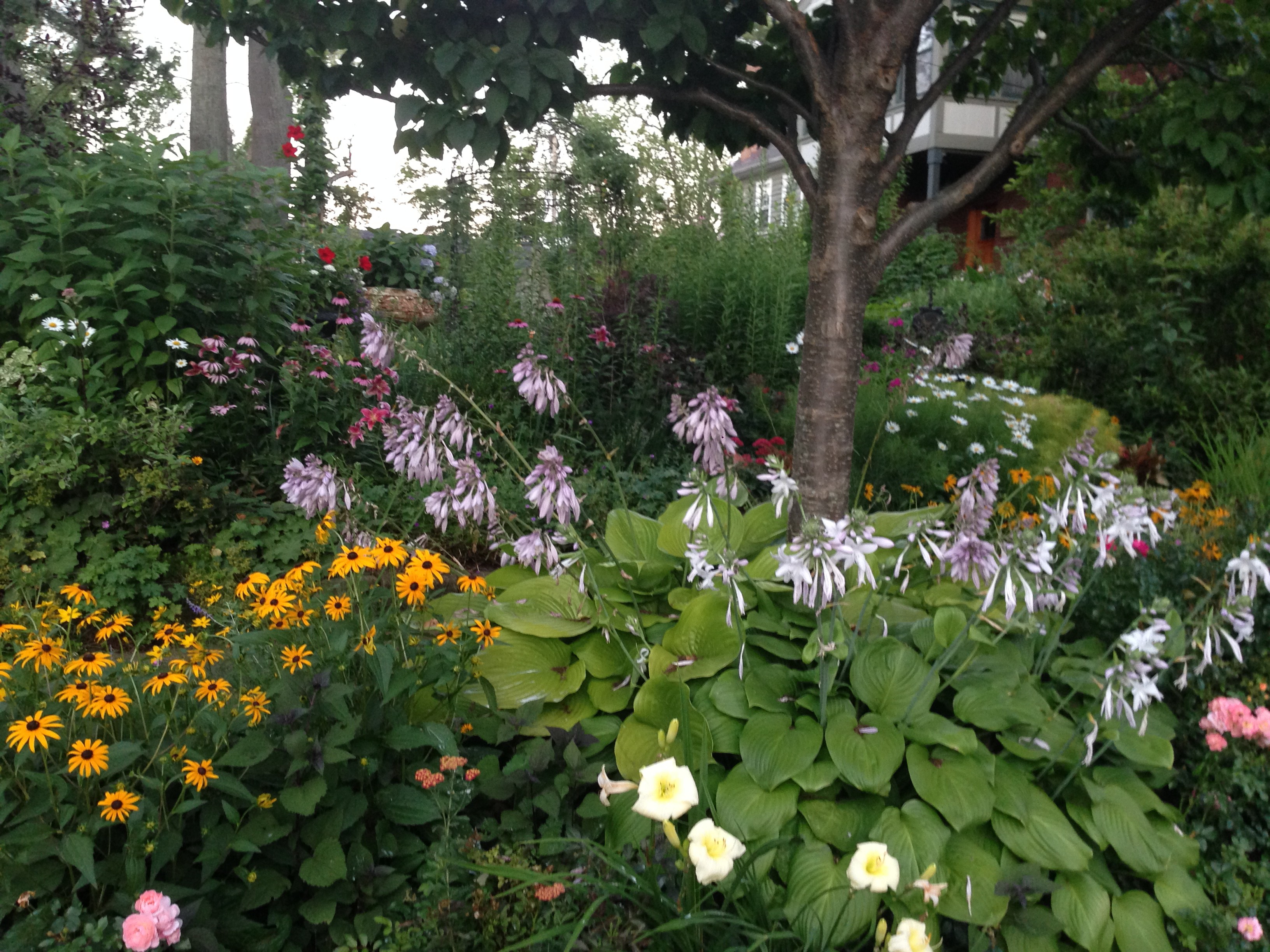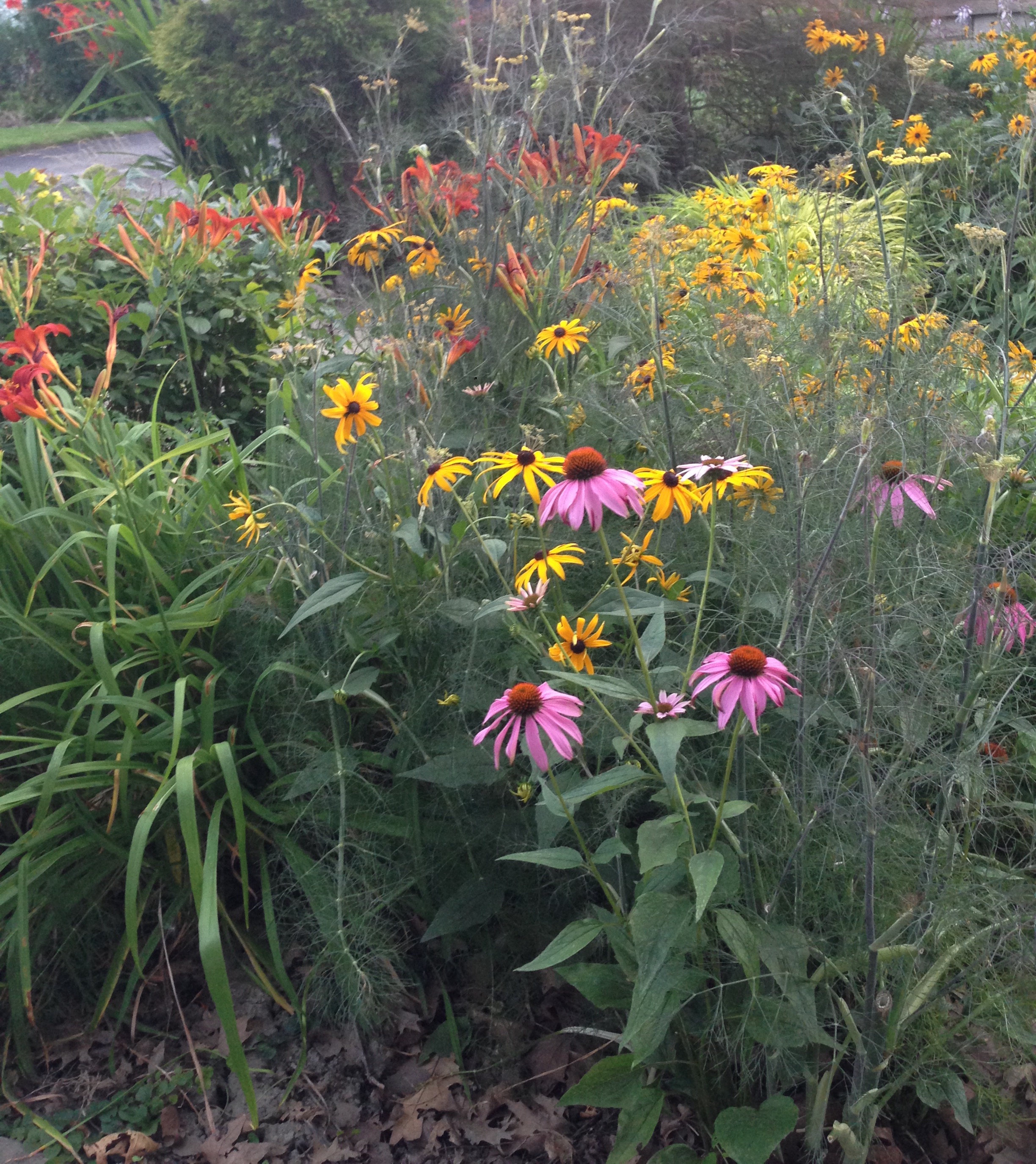I like to think of my tree lawn as chatting in a neighborly fashion with Jane’s, across the street. Hers is wild and wooly, grown from seed, self-seeding. a haven for pollinators. Mine is a bit more conventional, with plants native and otherwise, flowering and edible–aiming for eye-candy in all seasons. We are both a bit rebellious, the only ones on our block to have transformed our tree lawns, so really we are more alike than different; different enough, though, to have a lively dialogue (see below for Eutrochium purpureum (Joe-Pye Weed)/Asclepias Incarnata and Rudbeckia Maxima/Echinacea Paradoxa color correspondences)
Did you know that it is only in Cleveland that the term “tree lawn” is used? In other cities they may be called “hell strips,” or “devil strips.” I like our term because it evokes some pleasant possibilities for greater greenery, bloomery, and a kind of reckless cheerfulness.
Some others in our vicinity seem to agree and are also experimenting with such cheerful tree lawns (see below some transformations I have found nearby.)
If you have seen any such reincarnated tree lawns, please send inspiring photos to the rest of us at gardenopolisCLE@gmail.com or include them in the Comments section.
Getting back to Jane, what I would really like to see would be many more of the same plants on both of our tree lawns, the repetition of plant form and color along side of our somewhat different visions would make for a great conversation. And wouldn’t it be great fun if whole streets could collaborate on tree lawns that spoke to each other and provided feasts for our eyes and for our pollinators?




Whatever, but the photographs are really glorious!
Thank you!
Lovely blog conversation about tree lawns! Thanks for making me think about them. I was raised in a place that did not have sidewalks or treelawns per se. There usually was that flat strip of plain grass by the street, which became the place for “recycled” rubbish too large to go in a bin and tree limbs. It was also where stones from the street would congregate, which provided dangerous ground if you fell off your bike. That Shaker Heights has tree lawns and side walks is a bonus, as a shielded area for walkers off the street.
When I lived in Boston, I made an arrangement to garden in front of our townhouse. If others paid for plants, I would plant and tend the space, which was limited to small 2.5″ x 3.5″ plots where trees had been planted within the brick-paved sidewalks. Finding any plant that would grow in that salt-ridden soil was difficult to maintain, but the effort was worth it. Far better that it be planted than rock hard dirt which otherwise became a magnet for street rubbish that the street cleaners couldn’t reach. Once planted, it was noticeable how it maintained its tidy appearance!
Plant a seed and positive energy grows!
My two cents.
Thank you, Ware, for your thoughtful comments. Scouting beautiful tree lawns has become a new passion.
Hi, Catherine! Very nice tree lawn blog, but one of the pics is upside down! Will be on the lookout for other cool tree lawns. I have one in mind in Tremont…
Thank you, Janet. Please do be on the look-out and post here. If many people do the same, we will have quite a collection.
I think that if you can t maintain the trees then you shouldn t plant them, and if you don t have a real reason for planting them then I wouldn t. I hope that people are looking at places where trees need to be planted, whether for shading parking lots or big and large concrete areas, or maybe shading buildings to reduce AC bills and showing people the positive effects trees have in that way. The benefit of planting trees during a drought compared to lawns is that there are so many creative ways to water trees, like taking a bucket and reusing household waste.